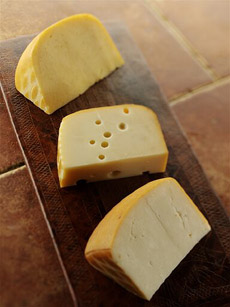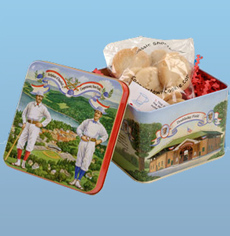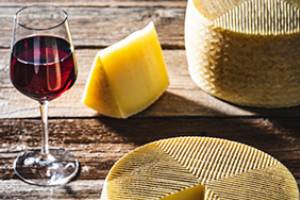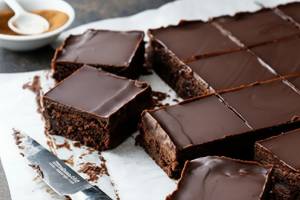|

[1] The harbinger of Yuletide (photo © Candy Warehouse).

[2] Multicolor candy canes from Hammond’s Candies, producer of “gourmet” candy canes (photo © Hammond’s Candies).
|
|
A candy cane is more than a snack or Christmas tree decoration.
We also like to use them as dinner table decor: Fold a candy cane into each napkin, or tie it with a ribbon as a place setting.
Here are other ways to use them.
This is also a good list for what to do when you’ve purchased too many candy canes, or what happens to them after the holidays.
These “leftover” candy canes add bright peppermint flavor to beverages and desserts, throughout the gray winter days.
Use as a stirrer for hot chocolate or crush to use as a cup rimmer or a garnish atop the whipped cream.
Mix into brownie batter, chocolate cookie batter, or other favorite recipe.
Make peppermint ice cream. You can do it from scratch, or soften a container of chocolate or vanilla ice cream just enough to stir in crushed candy cane pieces. Or more easily…
Use crushed pieces as a garnish, to turn plain vanilla or chocolate ice cream into holiday ice cream.
Make peppermint whipped cream to use as a garnish for hot chocolate, ice cream, chocolate cake or other dessert.
– Grind three candy canes or eight 1-inch peppermint candies to a fine powder in a food processor or spice mill.
– Set aside 3 to 4 tablespoons of the powder, depending on how strong a flavor you like, and reserve the rest in a small container for future use.
– Beat two cups of cold heavy cream in a small bowl until soft peaks form; fold in the peppermint powder.
How do you use candy canes? Please share!
|
CANDY CANE HISTORY
Candy canes were created in 1670 in Germany, by the choirmaster of the Cologne Cathedral. He created sugar sticks for the young singers in the choir, to keep them quiet during the long Living Crèche ceremony. He bent the sugar-sticks to represent a shepherd’s staff.
At this point, candy canes were all-white and had no flavoring. They remained this way for more than 330 years. White candy canes can still be seen on Christmas cards dating to 1900.
Shortly after then, the first red-and-white striped candy canes appeared. The name of the innovator is lost to history. At about the same time, confectioners added peppermint and wintergreen flavors to create the “modern” candy cane.
December 26th is National Candy Cane Day.
|







